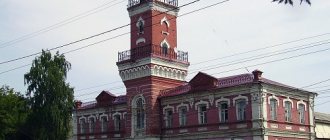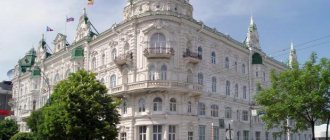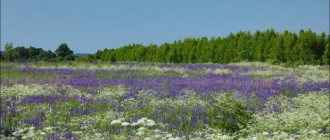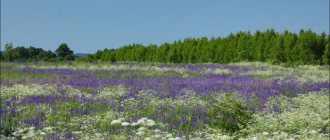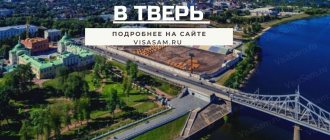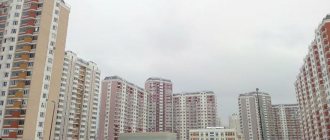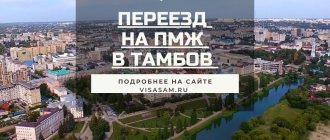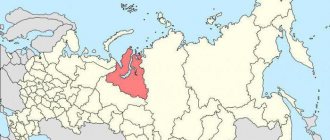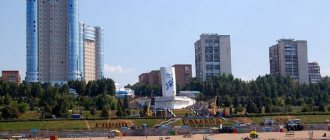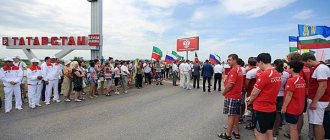Year founded: 1374
City Day is celebrated
on June 12
.
In 2021, due to the pandemic, mass events in honor of the city day are canceled or may be postponed
The station is the gate of the city
Kirov
(Khlynov, Vyatka) is the administrative center of the Kirov region. Located on the Vyatka River, 896 km from Moscow. A large transport, industrial and cultural and “peat” capital, a historical city of Russia.
The first settlements on the territory of present-day Kirov were formed presumably 2.5 thousand years ago. By the 7th century, the first nationalities of the Udmurt, Mari and Komi tribes were formed here. The main settlements were located along the banks of the Cheptsa, Moloma and Vyatka rivers.
First confirmed mention
about the city of Vyatka dates back
1374
in connection with the campaign of the Novgorod ushkuiniki against the main city of Volga Bulgaria - Bulgar.
In 1378, an alliance agreement was concluded between the Vyatchans and the Suzdal-Nizhny Novgorod principality, and from 1391 the city became the main residence of the Suzdal princes Vasily Dmitrievich and Semyon Kirdyapa, expelled from the Suzdal-Nizhny Novgorod principality after its conquest by Moscow. Ensemble of the Trifonov Monastery After the death of the princes in 1401, power passed to the Galician prince Yuri Dmitrievich.
Detachments of Vyatchan people take part in campaigns against the Golden Horde (1392, 1409) and in the war of Moscow Prince Vasily I with Novgorod (1417–1418). Due to its remoteness from the main Russian lands, the Vyatka land did not need an alliance with strong principalities and recognized only the patronage of the princes, remaining a self-governing territory. The people's council acted as the main governing body. The most influential group of the feudal class were the boyars, followed by the merchants and the clergy. The rest of the Vyatchans represented a free communal population and consisted of peasants and artisans.
Seraphim Church
Many famous names are associated with the name of Vyatka - the city was an exiled region, Saltykov-Shchedrin and Herzen, the architect Vitberg and the “iron Felix” Dzerzhinsky, the nephew of Alexander III Sergei Mikhailovich Romanov and many others lived here. The famous writer Albert Likhanov and cosmonauts Viktor Savinykh and Alexander Serebrov were born here. The famous Fyodor Chaliapin also has Vyatka roots. Natalya Goncharova and Isadora Duncan were here.
After the October Revolution of 1917, the Council of Supreme Administration of the province announced the non-recognition of the power of the Bolsheviks and the separation of the Vyatka province into an independent republic. In January 1919, Stalin and Dzerzhinsky visited Vyatka to check, finding out that Vyatka had no connection with the government in Moscow, most of the officials were former tsarist officials. As a result of the work of the commission, on January 19, 1919, a provincial Military Revolutionary Committee was created in Vyatka.
The famous Dymkovo toy
As of July 1938, there were 28 enterprises in the city, of which 13 were of union and republican significance, 7 of regional significance and 8 of local significance. Handicraft production was developed. During the Great Patriotic War, due to the evacuation of machine-building factories from Moscow and Leningrad, the industry of Kirov was mainly formed (modern ones, Avitek, Selmash, etc.).
On May 20, 2021, Russian President Vladimir Putin signed a decree awarding the title “City of Labor Valor” to 12 cities. Kirov was one of them.
Name Kirov
the city received after the murder in 1934 of a native of the city of Urzhum, Vyatka region, Sergei Mironovich Kostrikov (Kirov). An active participant in the October Revolution, however, was never in Vyatka itself. There are still debates in the city about what name the city should bear - Kirov or Vyatka.
In pre-revolutionary times, the city had a huge number of churches of beautiful architecture. Many of them were destroyed during Soviet times. One of the oldest cultural monuments of Kirov is the ensemble of the Assumption Trifonov Monastery, located on the embankment of the Vyatka River.
The tradition of the Velikoretsk religious procession is more than 600 years old (Photo: editor’s archive)
Other attractions of the city include the Church of Seraphim of Sarov, Alexander Park, Kirov Regional Art Museum. V.M. I am. Vasnetsov and others.
Today, more than 520 thousand people live in Kirov (as of 2020).
In addition to industrial enterprises, various folk crafts are developed here - the famous Dymkovo toy, products made from capocorn, Kukar lace, wickerwork, and ancient traditional embroidery.
One of the brightest events that takes place every year at the beginning of June is the famous Velikoretsk religious procession, which has more than 600 years of continuous tradition. Today the Velikoretsky passage has national significance.
Day of the city
in Kirov it is celebrated on June 12, simultaneously with another significant holiday - Russia Day.
History of the city of Kirov (Vyatka).
The first nationalities on the territory of today's capital of the Kirov region were formed in the 7th-10th centuries AD. In 1374, the first city was formed on the banks of the Vyatka River; it was founded by the Novgorod Ushkuiniki (robbers). The name of the city comes from the Khlynovitsa river.
Since then, Khlynov managed to visit the patrimony of the Vladimir-Suzdal principality, experience the invasion of the Tatars, and was eventually annexed to the Moscow principality.
Trifonov Monastery
On September 11, 1780, by decree of Catherine II, Khlynov was renamed Vyatka and removed from the Kazan province (before that it was also part of the Siberian province, and before the reform of Peter I an independent district town). In 1797, the Vyatka governorate was transformed into a province, which contributed to the further growth of the city. Various industries were developing, trade routes were developing. By the end of the 19th century, Vyatka was a developed trade and craft city.
The city received the name Kirov in memory of S.M. Kirov by decision of the Central Executive Committee of the USSR, this happened on December 5, 1934.
View of the Diorama
Sex and age structure
The city ranks 37th in terms of population in the ranking of the largest settlements in the Russian Federation. Most of the residents are women. Men make up only 44% of the population. The overwhelming majority of Kirov residents are representatives of the older generation. Young people are trying to move to St. Petersburg or Moscow. The working population of the city of Kirov is 310.6 thousand people. However, in reality, many of them do not work in the locality in which they are registered.
Sights of the city of Kirov.
Vyatsky Assumption Trifonov Monastery - when in 1489 Khlynov finally became part of the Moscow state, Ivan the Terrible sent a letter to the city about the construction of a wooden monastery in Khlynov. This happened on June 2, 1580, the monastery was named Trifonov in honor of its founder - St. Tryphon, the Vyatka Wonderworker. In 1689, the Assumption Cathedral of the Trifonov Monastery was built from stone, which has survived to this day. Now it is the most valuable monument of the first stone construction on Vyatka land.
Novodevichy Transfiguration Monastery - founded in 1624 as a convent. The building of the Transfiguration Church of this monastery, built in 1696, which has survived to this day, is an interesting example of Vyatka architecture (now it houses the “School of Higher Sports Excellence”, Dinamovsky Proezd, 6).
The ensemble of the Trinity Church in Makarya, the Gate and the fence - the first buildings were built in 1770, and have not survived to this day. This is due to both the reconstruction of buildings and their destruction. Now we can see the restored version of 1988 (architect of the reconstruction project E.L. Skopin). The church gate is rightfully considered an architectural pearl. They repeated the baroque forms of the temple, harmoniously complementing the unified stylistic concept of the churchyard. In the center of the three-part composition is a high passage arch, completed by a spectacular raising of the converging volutes of the cornice and dome.
Feodorovskaya Church - located on the Green Embankment - almost on the very shore of Vyatka. The first church on the same site was opened in honor of the Feodorovskaya Icon of the Mother of God in 1918. Having survived the revolutionary years, as well as the Great Patriotic War, it was blown up in 1963. In 1974, the city authorities wanted to erect a monument on this holy place in honor of the 600th anniversary of the city of Kirov, but nothing came of it. For more than 30 years, the prayer site was a wasteland. The opening of the modern temple took place on August 25, 2007.
I would also like to highlight the following attractions:
Kirov Drama Theater - the first wooden theater building was built in 1877. The new building that we can see now was built in a very short time in 1935. Its construction was carried out according to the design of Moscow architects Burov and Fedorov. The theater season was opened with the play “Lyubov Yarovaya” in 1939. During the war, the writer Evgeny Schwartz came to Kirov. In Kirov he wrote the plays “One Night” and “The Distant Land”. To date, the theater has performed more than 30 performances for both adult and young audiences.
Drelevsky Street - before the revolution, this street was called Spasskaya. Many historical and cultural objects have been preserved here, representing various eras in the history of not only Vyatka, but also Kirov. Part of the street is pedestrian (starting from the intersection with Lenin Street), and there are shops where you can buy various souvenirs. The possibility of making the entire Drevlevsky Street pedestrian in the likeness of Moscow's Arbat is being discussed.
Park named after S.M. Kirov - here you can just take a walk and feed the ducks, as well as ride the rides near the circus. The park complex includes a circus, a diorama, the Vyatka hotel, a pond and a summer playground with attractions. The park occupies a block between Oktyabrsky Prospekt, Krasnoarmeyskaya, Gorky and Azin streets. Between two ponds in the park there is a small waterfall with two bridges; this place is very popular among newlyweds. The diorama building rises above the upper pond.
A diorama is a museum, inside of which there is a large canvas depicting the events of 1917. The events took place at the intersection of Nikolaevskaya and Spaskaya streets. Now these streets are called Lenin Street and Drevlevsky Street.
A wishing tree with an ear is an architectural structure in the form of a tree on which an ear is located. You can whisper your wishes to this ear. Residents and guests of Kirov often take the opportunity to ask for something from this wonderful hearing aid.
Alexander Garden - founded in 1825 after Alexander I visited Vyatka. It is the central and one of the oldest parks in the Kirov region, which offers an excellent view of the Vyatka River. The entrance portico and cast-iron fence were designed in 1838-1840 according to the design of the Moscow architect Vitberg, who at that time was in exile in Vyatka. The central pavilion and the coastal rotunda were built according to the drawings of the Vyatka provincial architect Alexander Egorovich Timofeev in 1835.
Vyatka Kunstkamera - opened in 1992 in the house of the merchant Senilov. The museum consists of five halls, inside of which there are exhibits reflecting the era of the 19th century and urban life. Visitors can also view collections of watches, artistic metal products, collections of porcelain and earthenware, furniture and clothing attributes.
Alexander's Church - the opening of the church took place on August 31, 1903. Local Catholics had been waiting for this day since 1892, when, at the request of exiled Poles, Vyatka Governor A.F. Anisin, with the approval of the Minister of Internal Affairs, allowed local Catholics to open a prayer house. The temple with a plan in the form of a Latin cross is a single-nave building. The lowered apse and towers flanking the portal, with metal crosses on the light “lanterns”-domes, and the open belfry above the middle cross impart plasticity to the volumetric-spatial construction of the building.
Kirov Puppet Theater named after A.N. Afanasyev - founded in 1935, and is one of the oldest in Russia. In 1941, the theater was headed by actor and director Anatoly Nikolaevich Afanasyev, the founder of the theater dynasty, whose name was given to the theater in 2009. In 2009, a new building was built for the theater.
The A.S. Green Museum was built on the site where the outstanding writer used to live. In the museum you can see exhibits related to the life of the writer. A.S. Green lived in Kirov (Vyatka) in his youth and childhood. The museum’s collection contains items from the 19th – early 20th centuries - furniture, books by A.S. Green’s favorite authors, toys and school supplies.
House-Museum of M.E. Saltykov-Shchedrin - located in the house where M.E. lived from 1848 to 1855. Saltykov-Shchedrin, serving exile in Vyatka. The basis of the museum was the writer’s memorial office. The exhibition recreates the interiors of the mid-19th century. M.E. Saltykov’s personal belongings were not preserved. The museum was opened as a literary museum with a memorial office for the writer, therefore, according to tradition, exhibitions are organized annually to introduce the work of fellow countrymen writers.
Museum of K. E. Tsiolkovsky, Aviation and Cosmonautics - the museum is located in a building that belonged to the Vyatka merchants Shuravin. Later, the Tsiolkovsky family lived in this house. The museum is dedicated to the life and work of the scientist and founder of astronautics. The museum displays furniture that belonged to the Tsiolkovsky family, as well as household items from the 19th century. You can also look at the personal belongings of cosmonauts and pilots V.P. Savinykh and A.A. Serebrova.
Bulychev's mansion - built in 1911 for the merchant Tikhon Filippovich Bulychev by the architect Ivan Apollonovich Charushin. Located on Lenina Street, 96. This beautiful castle with an openwork cast-iron fence is an example of Gothic architecture. On the façade there are strict double-headed eagles. There is a tower at the corner of the building.
The house of A.Yu.Levitsky is a cottage house built in 1910 according to the design of E.K. Nykvist in the Art Nouveau style. Its shape is reminiscent of residential buildings in England, Holland and the Baltic countries. The provincial doctor Levitsky lived here.
Kirov Museum of Railway Transport - located on Karl Marx Street, house 147. It was opened on the 100th anniversary in honor of the laying of the first railway through Vyatka. In the museum you can get acquainted with the history of the development of railway transport in the Kirov region, and in Russia as a whole. Various exhibits are presented. One of the most interesting is a model of a railway station from the time the first trains appeared. In front of the entrance to the museum is the main exhibit - the steam locomotive Er 788-74.
Dynamo Stadium - Located on Moskovskaya Street, 1 V. Its capacity is 10,000 spectators. It is an open stadium for competitions and mass skating. There are a total of 6 operating stadiums in Kirov. It is also worth highlighting the Rodina stadium, where the nationally known hockey team Rodina plays.
Victory Park - located at the intersection of Lomonosov and Lepse streets. There are cafes, fountains, and various attractions for children and adults. Victory Park was laid out on the site where there once was a village. Many residents of this village took part in the Great Patriotic War.
Botanical Garden - located on Karl Marx Street, 95. The history of this wonderful place began in 1912. Its founder was A.A. Istomin, who bought the land and founded a private Botanical Garden here. The best gardeners, artists and architects of St. Petersburg worked on the project. The main part of the garden was planted in 1913. Most of these are imported plants. In the same year, greenhouses and an intricate pool in the shape of the Black Sea with fountains were built. The grotto from which the spring flows was especially good. Unfortunately, of all this splendor, only the swimming pool remains today. The Kirov Botanical Garden is a real open-air museum that includes many representatives of the plant world and their varieties.
Park named after Yuri Gagarin - originally there was a square on which the Alexander Nevsky Cathedral was built in 1864. In 1894, the territory was surrounded by a wonderful cast-iron fence and a park was laid out. Unfortunately, the Cathedral was blown up in 1938, and a pile of broken bricks remained in its place for a long time. Then there was a collective farm market, and even later a zoo. This place was now called Revolution Square. In the 60s of the twentieth century, a television center building and a philharmonic society were built here, many attractions appeared, the alleys were landscaped, and the park itself received a new sonorous name.
Ethnic groups
According to the latest All-Russian Population Census, which was conducted in 2010, the vast majority of Kirov residents consider themselves Russian. Their share of the total number of persons who indicated their nationality is 96.65%. It should be noted that only 4.65% of residents did not leave a mark in the corresponding column of the census form.
The population of Kirov, which belongs to other nationalities, is 3.35% of the total. They are representatives of such ethnic groups as Tatars, Ukrainians, Mari, Udmurts, Azerbaijanis, Belarusians and Armenians.
Administrative structure
Kirov is divided into four urban districts. The largest population is in the Leninsky district. There are also the following non-municipal entities: Novovyatskoye, Oktyabrskoye and Pervomaiskoye. The main territory is formed by the coastal part in close proximity to the Vyatka River. The city is also adjacent to rural microdistricts - Pobedilovo and Lyangasovo. A total of 134 settlements (mostly villages) are subordinate to urban areas.
Kirov is a unit of local government. The main regulatory document of a settlement is the Charter of the municipality. The document was last revised in 2005. In accordance with this charter, the main governing bodies, as well as city services, are formed. The main body of local government is the Kirov City Duma. It consists of 36 deputies. It is these people who are responsible for the social protection of the population of Kirov. The Duma adopts the city budget and develops plans for the economic and cultural development of the locality. In addition, the Duma approves the head of the city. This is the highest official of the municipality. In 2021, the role of the head of the city was performed by Vladimir Vasilyevich Bykov.
Regional authorities and the legislative assembly also function in Kirov. These are the most important organs of Kirov. The standard of living of the population is controlled precisely thanks to their work.
Education
Kirov is a fairly large regional center. Ethnic groups here have the opportunity to receive quality education at the same level as the indigenous people. There are more than 100 educational institutions in the city. These are schools, lyceums and gymnasiums. The Center for Additional Education of Gifted Schoolchildren deserves special attention. Work with children is carried out in the following areas: biology, chemistry, mathematics and physics. Children can study in absentia. Not everyone can get here. To attend classes, you will first have to pass a competition. Students in grades 7-11 receive additional education.
In Kirov you can also get a high-quality higher education. Vyatka State University was founded in 1963. In 2001, the institution was awarded classical status. The educational institution today unites 75 departments. It is also possible to receive distance learning. The most popular, according to reviews, is the Department of Biology. Many children come here after studying at the center for additional education of gifted students.
You can hear a lot of good reviews about Kirov State Medical University. The first students began studying here in 1987. Now these are talented doctors, thanks to whose work more than one life has been saved. In 1996, a branch of the educational institution was opened in the Komi Republic. There is a faculty of additional and pre-university education here.
The Vyatka State Agricultural Academy operates in Kirov. The most popular is the Faculty of Veterinary Medicine. Specialists in the field of veterinary medicine and commodity science are trained here.
Economy and industry
Kirov is a developed economic center. The population is growing due to the large number of jobs. The financial sector is developing at a tremendous pace. A lot of good reviews can be heard about Norvik Bank, which until 2015 was called Vyatka Bank. In addition, numerous branches of federal financial institutions operate in Kirov - Sberbank, VTB Bank, Raiffeisenbank, etc.
Industry is also developing rapidly. Just look at Lepse - the largest enterprise for the manufacture of electrical equipment. The Kirov Employment Center always has fresh vacancies; it also produces railway and oil refining products.
The Kirov Cold Storage Plant makes a huge contribution to the city’s economy. This is a large company that produces ice cream, cold desserts, fruit ice, sorbets, etc. The factory was founded in 1936. For more than 80 years of operation, the company has achieved enormous success. Kirov ice cream is eaten in many Russian cities.
One cannot help but recall the Kirov Tire Plant. According to statistical data, this is the second largest tire manufacturer in Russia. Since December 2011, the company has been owned by an Italian holding.
There is also a machine-building plant in the city of Kirov. It was founded in 1959. Today the company specializes in the production of household appliances. The most famous achievement of the plant is the Vyatka-automatic washing machine.

